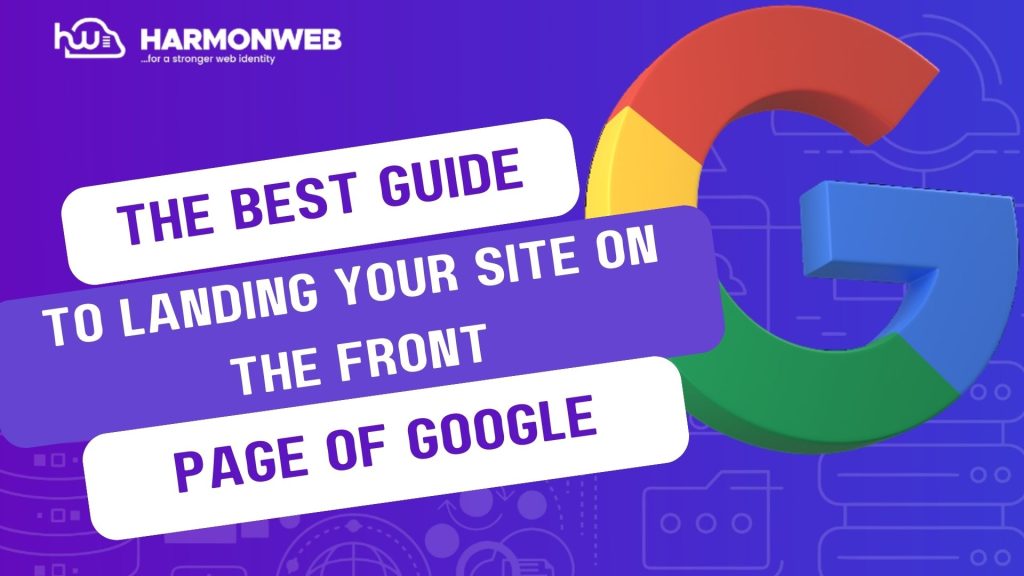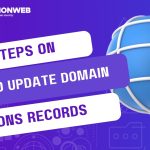Securing a spot on Google’s front page in today’s digital era is essential for businesses and content creators who want to drive organic traffic, build authority, and achieve their goals. However, achieving this coveted spot isn’t accidental which requires strategy, effort, and consistency.

Table of Contents
Why Ranking on the First Page of Google Matters
Ranking on the first page of Google is more than a vanity metrics. It’s a business necessity in today’s competitive digital landscape. With over 90% of users never venturing past the first page of search results, where your website ranks can significantly influence your visibility, traffic, and overall success. Here’s why landing on the first page matters:
1. Maximum Visibility
The majority of users click on one of the first three results when searching for information. Being on the first page ensures that your website is front and center, making it more likely for users to find you. In contrast, websites buried on the second page or beyond are often overlooked entirely.
Key stat: The top result on Google’s search page gets around 28% of clicks, while the tenth result receives just 2.5%.
2. Builds Trust and Credibility
Users inherently trust Google’s algorithm to deliver the most relevant and reliable results. Appearing on the first page signals to your audience that your website is credible, authoritative, and worth exploring.
Perception matters: Many people associate higher rankings with quality, even if they don’t consciously realize it.
3. Drives Targeted Traffic
Being on the first page ensures that your website is visible to people actively searching for your products, services, or content. Even if users don’t click on your link, appearing on the first page helps establish brand recognition and consistent visibility increases the likelihood that users will remember your name when they’re ready to make a decision.
4. Better Return on Investment (ROI)
Compared to paid ads, ranking organically on Google provides a better long-term ROI. While SEO requires an upfront investment of time and resources, the sustained visibility and traffic it generates far outweigh the costs.
5. Competitive Advantage
If your competitors are ranking on the first page and you’re not, they’re likely capturing a significant share of the market. Securing a top spot ensures that you stay ahead of the competition by attracting potential customers who might otherwise choose them.
6. It’s a Gateway to Higher Conversions
First-page rankings don’t just bring traffic—they bring qualified traffic. These are users actively seeking products, services, or information related to your niche. As a result, they’re more likely to convert into leads or customers.
How to Get Your Site on Google’s Front Page
This guide will walk you through the proven strategies to help your website climb the Google ranks.
1. Start with Keyword Research
Understanding what your audience is searching for is the cornerstone of SEO success. Use tools like Google Keyword Planner, Ahrefs, or SEMrush to find relevant keywords with:
• High search volume
• Moderate to low competition
• Long-tail phrases (e.g., “best hiking boots for beginners”)
Pro tip: Focus on intent-based keywords—those that indicate the user is ready to take action, such as “buy,” “learn,” or “compare.”
2. Create High-Quality, Relevant Content
Content remains king in the SEO world. Google prioritizes content that provides real value to users. Here’s how to ensure your content stands out:
• Solve problems: Address specific pain points or questions your audience has.
• Keep it comprehensive: Cover the topic thoroughly, using subheadings, bullet points, and visuals.
• Regular updates: Refresh older posts to keep them relevant.
Remember, content should be crafted for humans first, search engines second.
3. Optimize On-Page SEO
Fine-tuning your website’s technical and on-page elements is crucial. Follow these best practices:
• Title Tags: Include your target keyword within 60 characters.
• Meta Descriptions: Craft compelling, keyword-rich summaries under 160 characters.
• Header Tags (H1, H2, etc.): Structure your content for readability and SEO.
• Internal Linking: Connect related content on your site to boost navigation and authority.
• Image Optimization: Use descriptive file names and alt text for all images.
4. Build Quality Backlinks
Backlinks—links from other websites to yours—signal credibility and authority to Google. Here’s how to build them:
• Guest Blogging: Write high-value articles for reputable sites in your niche.
• Broken Link Building: Find broken links on relevant sites and offer your content as a replacement.
• Create Shareable Content: Infographics, statistics, and research tend to attract backlinks.
Focus on quality over quantity—one link from a credible source is worth more than dozens of low-quality ones.
5. Ensure Your Site is Mobile-Friendly
With mobile devices accounting for more than 50% of global website traffic, a mobile-responsive design is non-negotiable. Use Google’s Mobile-Friendly Test tool to ensure your site:
• Adjusts seamlessly to different screen sizes.
• Loads quickly on mobile devices.
• Features easy navigation and clickable elements.
6. Improve Website Speed
Page speed is a critical ranking factor. Visitors (and Google) favor fast-loading websites. To optimize speed:
• Compress images without losing quality.
• Use caching plugins or Content Delivery Networks (CDNs).
• Minimize HTTP requests by reducing scripts and CSS files.
7. Leverage Local SEO (if applicable)
For businesses targeting local customers, local SEO is vital. Optimize by:
• Creating a Google My Business profile with accurate details.
• Encouraging customer reviews and responding to them.
• Using location-specific keywords like “best coffee shop in Boston.”
8. Utilize Analytics to Refine Your Strategy
SEO isn’t a one-and-done process. Use tools like Google Analytics and Search Console to:
• Track your rankings and organic traffic.
• Identify high-performing content.
• Detects issues such as broken links or slow-loading pages.
Continuously adapt based on these insights.
9. Focus on User Experience (UX)
Google’s algorithms prioritize websites that offer a seamless user experience. To improve UX:
• Simplify site navigation.
• Use clear call-to-action (CTA) buttons.
• Avoid intrusive pop-ups.
The longer users stay on your site, the better your rankings will be.
10. Stay Updated on SEO Trends
Google updates its algorithms frequently. To stay ahead, follow reputable SEO blogs like Moz, HubSpot, and Search Engine Journal. Adopt new strategies promptly, such as optimizing for voice search or AI-driven queries.
The Basics of Google’s Search Algorithm
Google’s search algorithm is a powerful and ever-evolving system designed to connect users with the most relevant, high-quality content based on their search queries. Understanding its basics is essential for improving your website’s visibility. Here’s a breakdown of how it works:
1. Crawling
Before Google can rank a webpage, it must find and understand it. The process begins with crawlers (also known as spiders or bots) that:
- Navigate the web to discover new or updated pages.
- Follow links on webpages to find additional content.
- Index content based on what they find.
Tip: Make sure your website is crawlable by using a well-structured sitemap and avoiding technical barriers like poorly configured robots.txt files.
2. Indexing
Once a page is crawled, Google analyzes and stores it in its vast database, known as the index. During this phase, Google evaluates:
- The content on the page (text, images, and videos).
- Metadata, such as title tags and meta descriptions.
- The structure and organization of the page.
Tip: Use descriptive titles, meta tags, and alt text to help Google understand your content.
3. Ranking
When a user performs a search, Google’s algorithm ranks indexed pages based on their relevance to the query. Factors that influence ranking include:
a. Relevance
Google evaluates how well your content matches the user’s search intent. This includes:
- Keyword usage.
- Context and topic alignment.
- Synonyms and related terms.
b. Authority
Google measures your site’s authority by analyzing:
- The number and quality of backlinks pointing to your site.
- The trustworthiness of the linking sources.
c. User Experience (UX)
Pages that offer a great user experience are prioritized. Key considerations include:
- Mobile-friendliness.
- Page load speed.
- Clear navigation and low bounce rates.
d. Freshness
For time-sensitive queries, Google favors newer, more relevant content.
e. Location
For localized searches, proximity to the user plays a significant role in ranking.
4. Updates and Changes
Google frequently updates its algorithm to improve search results and combat manipulation. These updates can be broad core changes or targeted improvements (e.g., to reward quality content or penalize spammy tactics).
Tip: Focus on creating user-centric content and following best practices to remain resilient to algorithm updates.
5. Key Algorithm Elements
- PageRank: Evaluates the quantity and quality of backlinks to measure a page’s importance.
- E-A-T (Expertise, Authority, Trust): A framework used to assess the quality of content, particularly in sensitive niches like health or finance.
- Core Web Vitals: Metrics that measure a site’s speed, responsiveness, and visual stability.
6. Tools to Monitor and Adapt
To keep up with algorithm changes and track your performance:
- Use Google Search Console to identify indexing issues and performance metrics.
- Leverage tools like Ahrefs or SEMrush for keyword analysis and backlink audits.
- Regularly monitor analytics to track traffic trends and user behavior.
Conclusion
Landing your site on Google’s front page isn’t an overnight process, it requires patience, persistence, and a focus on delivering value to your audience. By implementing the strategies outlined in this guide, you’ll be well on your way to boosting visibility, increasing traffic, and achieving long-term success.
Are you ready to take your website to the next level? Start optimizing today and watch your rankings soar!





